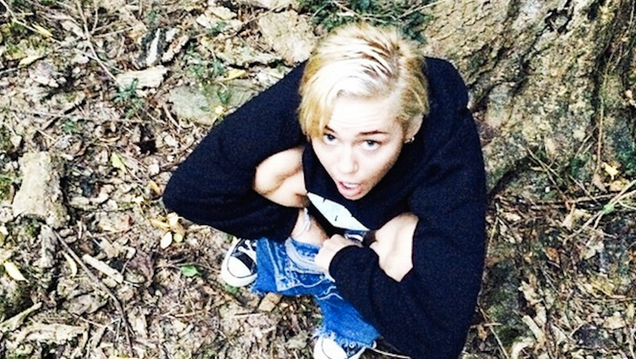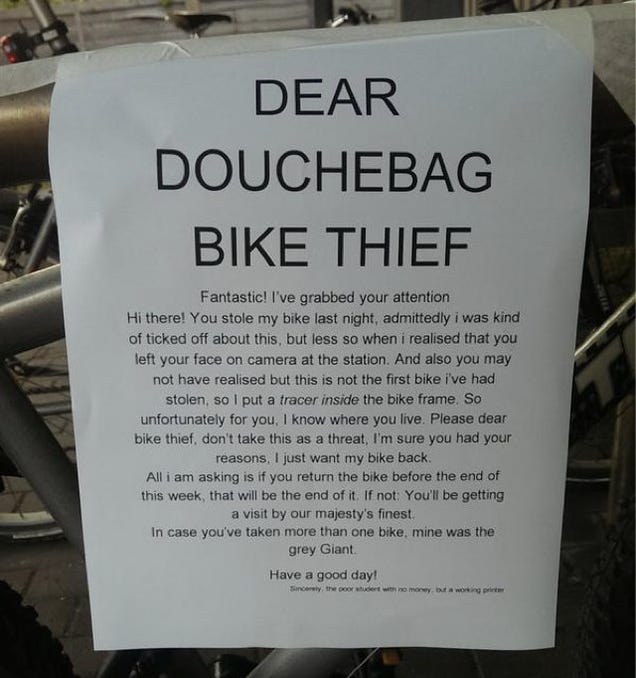![Pro Wrestling's Greatest Angle Was Convincing Us It Doesn't Matter]()
This article was first published at Jacobin, a publication offering socialist perspectives on politics, economics, and culture. Subscriptions start at $19.
The headquarters of the World Wrestling Federation has the manicured look of a call center. Or the back office of a bank—its black, reflective glass exterior concealing a few hundred third-shifters, examining checks for floating endorsements and miskeyed routing numbers.
It is no Dallas Sportatorium, Fritz Von Erich's legendary wrestling venue, a low-hanging mess of shingles and rickety bleachers, filled from its dirt floor to exposed rafters with beer, popcorn, and hooting. No rival wrestling promoter will ever drive his Corvair to the Federation's Stamford home in the dead of night, heft a jerry can onto the roof, and torch this building.
It is the strange fate of America, in its waning days, that even wrestling—carnival redoubt of grifters, heels, and freaks of every stripe—would wind its way into the colorless confines of a ratty corporate park. Today, World Wrestling Entertainment—now renamed, per a legal settlement with that more genteel WWF, the World Wildlife Fund—trades on the New York Stock Exchange with a market capitalization of over $856 million.
Jim Barnett, one of the most powerful godfathers in the mid-twentieth century "Territorial Era" of wrestling promotion, boasted that he dealt with only three coteries: kings, prime ministers, and dictators. Barnett more typically dealt with sweaty jobbers and Georgia babyfaces, with names like "The Continental Lover" or "Geeto Mongol," but the claim is perhaps not as ridiculous as it appears. Historically, professional wrestling, with its screaming neon lunatics, potbellied big daddies, and tasseled "ring rats," has been considered too absurd to be taken seriously—deprecated by sportswriters and ignored by politicians, its fans derided as low-class marks.
This—the notion that pro wrestling is a fixed, low-rent travesty, undeserving of serious mainstream scrutiny—is the single greatest angle ever sold by the wrestling industry.
![Pro Wrestling's Greatest Angle Was Convincing Us It Doesn't Matter]()
Pat O'Connor dropkicks Hans Hermann at Madison Square Garden in 1954.
There are competing theories as to the origin of the term "kayfabe," beyond its provenance in the strange lingo of the carnivals from which American pro wrestling emerged. But as to the meaning, there is no confusion; it is the central axiom of the business. As explained by journalist David "The Masked Man" Shoemaker, kayfabe is "the wrestlers' adherence to the big lie, the insistence that the unreal is real … the abiding dogma of the pro wrestling industry."
And the flip side of kayfabe is that, in an industry where the unreal is real, where Hulk Hogan is a "real American" fighting for the rights of every man, truth wears a mask.
Nothing is more real—and more obscured by the smoke and mirrors of the mat—than a simple fact: the billion dollar spectacle of pro wrestling relies entirely on the ruthless economic, mental, and physical exploitation of its performers. In that world, of lingering physical ailments, screwjob employment contracts, and chugalug drug abuse, Hulk Hogan is a millionaire named Terry Bollea, a favorite of WWF management, poached from a Minneapolis wrestling promotion and transformed into the star of "Hulkamania." In that world, in 1986, Bollea ratted out his fellow wrestlers to crush a nascent unionization drive ahead of Wrestlemania II. In that world, wrestlers are exploited and injured and thrown away—their final contribution to the world, a mortality rate on par with day one of Antietam.
For a fake sport, pro wrestling sure has a lot of real casualties. Its only business model is fear.
Professional wrestling's success was shepherded throughout the mid-twentieth century by the National Wrestling Alliance, a viciously anti-labor cartel comprised of the country's leading promoters. Colluding to control wages, stifle competition, and crush any resistant wrestlers, the NWA survived a federal antitrust investigation to dominate pro wrestling well into the seventies.
Yet it wasn't until recent decades that wrestling would grow unbelievably profitable, just as control of the entire industry came to rest with one corporation. On New Year's Day, 2014, WWE CEO and Chairman Vince McMahon could claim to be a billionaire in almost full control of the industry.
But these machinations are the stuff of rich men. Most wrestlers are not rich men.
A History of Violence
"There is more intrigue connected with professional wrestling than anything else but communism and television," deadpanned New York Daily Mirror sports columnist "Redoubtable" Dan Parker, in 1956. "Wrestling promoters,"Parker continued, "hold their conventions on spiral staircases with coats of mail under their shirts as protection against back-stabbing."
Parker would know. A withering commentator on the sports underworld, two decades earlier, he had published the insider testimony of Jack "Halitosis Kid" Pfefer, in what would be one of the first prominent press exposés of pro wrestling. Pfefer's snitching was mostly limited to exposing that wrestling champions, like "Golden Greek" Jim Londos, had been preselected by the "Trust," composed of promoters Jim Curley, Ray Fabiani, and the legendary Toots Mondt. The winner of a title bout had not bested his opponent; the promoters had determined who would win, based on a consensus of what would be best for business. The revelation that promoters were powerful enough to collude in labor suppression and market manipulation across an entire continent was lost in the maelstrom.
It would be a story Parker would continue to cover, as control of the wrestling world accumulated under the aegis of a few powerful men. In 1948, several regional promoters met in Waterloo, Iowa to form the National Wrestling Alliance. The NWA would dominate the sport for the next three decades, and would, at its height, come to incorporate forty-some-odd "territories" across North America, the Caribbean, East Asia, and the South Pacific.
If the persistent rumors of organized crime's involvement in wrestling are little more than an urban legend, it is because there was no necessity for wiseguys. The NWA was its own mafia. And its duties largely consisted of coercing, putting over, or stretching the one commodity without which the entire enterprise could not function: the wrestlers.
The Cartel
The logic of the NWA was simple. No single promoter could, at that time, exercise control over pro wrestling throughout the United States. The next best option for promoters, eager to make money in a sport both less scrutinized and more popular than boxing, was industry-wide collusion. The formation of the NWA allowed for promoters to mediate any disputes and to demarcate the territories in which each member would be allowed to stage matches—thus, "The Territorial Era."
Eddie Graham would run wrestling in Florida; LeRoy McGuirk would hold dominion over Oklahoma; Don Owen would entertain the marks of Oregon and Washington state; and so on.
After carving up the habitable world, the NWA's next step would be to strangle any outside competition in the cradle. Non-NWA promotions, also known as "outlaw promotions," would be ruthlessly stamped out if they attempted to stage wrestling shows in NWA territory. Blockbuster NWA shows would suddenly be staged across town, on the same night, as an outlaw promoter's show. Star wrestlers would agree to appear in an outlaw show, then get bribed to stay home—the outlaw promoter eating the cost of a heavily advertised no-show. Mid-level wrestlers would be threatened with the blacklist for appearing on an outlaw card.
More extreme measures might be taken by unknown parties: municipal coliseums and arenas would suddenly shred contracts, threatening phone calls would be received, and mysterious fires would be kindled. And if all else failed, the NWA could go to the extreme of scorching the earth—"burning" the territory with an overwhelming glut of bad shows, underwhelming scripting, and mediocre wrestling, until business all but evaporated in the area.
This was just how the alliance treated rival promoters. For the wrestlers, it was even nastier.
The Jobbers
Labor coercion by management—in almost any industry—need not take the form of a threat. More often than not, management will present a false choice: you can go wrestle as a jobber for one hundred bucks a week for Ed McLemore, out in Texas, or you can not. It's fine if you don't. But you might not get another call. And of course, for those who had something to say about any of this, the NWA had other hardball responses.
Promoters conspired to fix wages around the country and agreed to not pay above the going rate for most wrestlers, with the exception of a few top-drawing stars who might be granted contracts—lest they jump territories or ditch promoters. Intimidating the workforce was imperative for promoters.Big Jim Wilson, an ex-NFL lineman and former wrestler who, after being blackballed in the industry, would attempt to build support for tight governmental regulation of wrestling, would identify the key expense which could meaningfully impact the promoters' profit margin:
Without one MBA among them, wrestlers deduced the most important line item in pro wrestling's accounting spreadsheets—the incredibly low business costs. As a business, the wrestling industry's only operating expenses were monies paid for arena rentals, TV production, and talent—wrestler compensation. With some quick calculations, wrestlers concluded that talent compensation could not possibly constitute more than 15% of wrestling's gross … wrestlers should have realized they were the industry's biggest marks.
It should not be surprising that in an industry controlled by, at most, thirty village Napoleons, in which promoter profits could easily be increased by a wide margin merely by keeping labor expenses as low as possible, that labor suppression would be vigorous and multifaceted.
A 1921 article by sportswriter Al Spink about the aforementioned "Curley Trust" detailed one of the most commonly employed forms of coercion exercised by promoters against wrestlers—the blacklist. His column, profiling "Marin Plestina, greatest wrestler in the world," found that Plestina had been blackballed by Curley from competing in any championship bout, across North America: "Here today is actual evidence of the existence of a wrestling trust that would bar from all wrestling contests…men who are of good standing in the professional wrestling game."
The threat that any wrestler could, if he said or did the wrong thing, be permanently blackballed in his only profession, was usually sufficient to ensure compliance. Wrestlers could complain all they wanted—about getting paid $30 a gig; about paying for "gasoline runs" on far-flung road shows; about being compelled to do "blade jobs," the cutting of one's forehead mid-match to induce bleeding—but for most wrestlers, fear was a gag.
![Pro Wrestling's Greatest Angle Was Convincing Us It Doesn't Matter]()
Muhammad Ali and Freddie Blassie, 1976.
Wrestlers regularly complained of irregularities in the gate receipts, counting the number of people in the audience mid-match, then finding half that number recorded in the ledger, as promoters pleaded poverty in cutting the checks. But what could they do? This was not a localized problem; this was the brick and mortar of professional wrestling for most of the century.
A 1973 lawsuit brought by blacklisted wrestler Don "Mr. X" Pruitt exposed other nasty mechanisms of NWA coercion, including the corruption of state athletic commissions, forced "heel turns" meted out to turn would-be champions into despised bad guys, and "stretchings"—the intentional injury of wrestlers in the ring, ordered by promoters in retaliation for some perceived slight.
What self-deception and a non-stop party culture could not palliate for wrestlers, vicious intimidation could.
Mr. McMahon's Neighborhood
One possibly apocryphal story tells of a phone call in the early eighties between Ted Turner and wrestling's éminence grise, WWE CEO and Chairman Vince McMahon. Turner, by then an extremely powerful cable programmer and billionaire, grandly announced, "Vince, I'm in the wrassling business"—to which McMahon is said to have responded, "That's great, Ted—I'm in the entertainment business."
If the call never happened, it may as well have. It was in this era that McMahon, the once-estranged son of a New York-based NWA promoter, would commence a multi-decade war on his erstwhile partners, with the aim of aggressively reshaping the industry into "sports entertainment" with only one promoter at the apex. The explosion of pro wrestling in the eighties, with the advent of "Hulkamania" merchandising and MTV cross-promotion, heralded an astonishing new level of cultural relevancy and profitability for the industry. Those profits came at the direct expense of the wrestlers.
Since the early eighties, the story of pro wrestling has more or less been the story of a burgeoning monopoly, that of McMahon's WWE. There is no such thing as a nice billionaire, and Vince is unexceptional in this regard.
Aggressive Expansion
The first chapter in the WWE story is one of what the conservative economist Joseph Schumpeter might call "creative destruction," in which McMahon, using the power of cable TV, cartoonish pop aesthetics, and governmental deregulation, co-opted or ruthlessly destroyed his competitors. Perhaps the closest analogy was the contemporaneous destruction of the Mafia's stranglehold over Las Vegas gambling and the rise of the new, glittering Vegas Strip. No more knuckle-dragging goombahs, with all the PR skills of a pot of lampreys; it would be corporate titans like Steve Wynn or Sheldon Adelson in charge, so that everyone could pretend organized vice was a clean trade.
Like the oligarchs of nineties Russia, most of whom entered the post-Soviet era as ambitious, well-connected crooks without much in the way of a conscience, McMahon was well positioned in advance of his campaign to dominate the industry. His father had bequeathed him the most prized NWA territory, New York City, and with it, the glittering crown jewel, Madison Square Garden. McMahon the Elder had been one of the earliest pioneers in the nationwide broadcasting of wrestling, and it was to be with this cudgel that McMahon the Younger would smash his adversaries.
McMahon simply bought out many promotions, such as Georgia Championship Wrestling. By aggressively headhunting star wrestlers, promising jobs to rival promoters, and paying well above market price for ownership stakes in rival outfits, McMahon was able to make significant inroads into regional markets across the country. The advent of Pay-Per-View was ultimately even more deadly. Cable spectaculars like "Wrestlemania" not only generated millions of dollars in revenues for McMahon; broadcast nationally, they trampled across the old dividing lines.
There were some formidable opponents, who might have managed to turn the tide against the WWF had they united. Instead, McMahon won that war, defeating every colorful peacock in his path, from the Carolina's Big Jim Crockett, to Minnesota's Verne Gagne, to, eventually, Atlanta's own Ted Turner.
Since the incorporation of Turner's WCW into the WWE in 2001 and the end of the "Monday Night Wars," there has been no serious competition in the world of pro wrestling. Unsurprisingly, this has not translated into greater prosperity for most wrestlers.
Requiem For An Independent Contractor
The evolution of pro wrestling's public image has put wrestlers in a bind. Vince McMahon is a white-collar sleazeball, but one with a bottomless supply of starch. A "leper with the most fingers," McMahon has a certain oily charm in spite of himself and can honestly say that he has taken bumps alongside his wrestlers. The inequities of the wrestling industry are not as stark as they were in the days of the NWA machine, when McMahon was promoting shows in northern Maine; they have been carefully massaged with all the skill the modern corporation can bring to bear upon a knot in the muscles.
Pro wrestling's greater visibility as cheesy adolescent fantasy tends to mitigate the public backlash the industry should receive each time another wrestler dies young. This very quality of mainstream disrespect has largely served the interests of a blood-soaked business.
If the NWA was a down-home cosa nostra of sorts, a twanging syndicate of hucksters in loud sport coats, McMahon was the slick corporate raider, a gorilla whose suit actually fit. McMahon doesn't speak like a good ole boy; he sounds like Mitt Romney. This is no coincidence. In its aggressive campaign against state regulation, dislocating terms of employment, and poisonous, often fatal working conditions, the WWE is a corporation only a Republican senator could love. "I'm an entrepreneur," McMahon deigned to inform Bob Costas. "I'm what makes this company, my company and this country, go round and round. I take risks."
![Pro Wrestling's Greatest Angle Was Convincing Us It Doesn't Matter]()
Vince McMahon announces the formation of the doomed XFL.
Round and round. It's true. Like a true entrepreneur, Vince McMahon does take risks—usually with other people's lives, from lowly, forgotten jobbers like Charles Austin and Darren Drozdov, both of whom were paralyzed wrestling in WWF matches, to bona fide stars like Owen Hart, who died after falling seventy-eight feet out of a stunt harness and into one of Vince's rings. Whether you're low-status "enhancement talent," whose only job is to make the babyfaces look good, or wrestling royalty like the Hart family, all of Vince's wrestlers share one important commonality: they are not employees of World Wrestling Entertainment, Inc. Rather, they are independent contractors, freely furnishing their services in an ostensibly voluntary arrangement with a corporation.
The orchestration of pro wrestling heavily depends on such apparently minor distinctions, on degrees, and feints. Take, for instance, the piledriver. Executed correctly by two working wrestlers, it is a safe move, a staple of the mat. Executed slightly incorrectly, it can lead to paralysis, death, or an injury of the sort which possibly shortened "Stone Cold" Steve Austin's career.
Another delicate maneuver: is a pro wrestling match a competition, or an exhibition? A seemingly minor distinction—but in the eighties, the money men of pro wrestling broke kayfabe, that code of silence safeguarding the industry's competitive integrity, to all but bellow at state lawmakers that the matches were predetermined, that the whole show was "fake."
Why? The benefits were compelling. If pro wrestling is just "entertainment," there is no need for regulatory scrutiny. By pushing through deregulation, with the help of sleazy right-wing lawyers like Rick Santorum, the WWF wriggled out of paying taxes on their TV broadcasts and sloughed off any oversight by state athletic commissions. In New Jersey, for instance, following the state legislature's 1989 deregulation of the industry, the state "would no longer license wrestlers, promoters, timekeepers and referees," and wrestlers "would no longer be required to take physical examinations before an exhibition"—a fateful dereliction in a business rife with injury.
The cultural consensus which continues to dominate this nation is that greed only exists for Cadillac-driving welfare queens and fatcat union bosses. It is never accounted as greedy, for instance, that the entire aim of three decades of dislocating economic policies has been to squeeze blood from a stone, depriving laborers of basic securities so as to legalize labor exploitation. So it is that wrestlers are never "employees"—but rather, independent contractors, who, like the wandering samurai of feudal Japan, or the noble free lances of 12th century England, face the strong likelihood of penury, injury, and an early death. As independent contractors, wrestlers must file state income tax returns in each state that they wrestle—an onerous task—as well as pay a punishing self-employment tax.
As attorney and academic Oliver Bateman writes, "most low-level performers and members of the female Diva division operate on short-term guaranteed contracts in the mid–five figures, out of which they must pay for their travel, food and lodging."
Despite their putative "contracts," the wrestlers can often be fired by the promotion at any time. The WWE does not pay into Social Security or unemployment insurance for the wrestlers and, in an industry in which late-life financial jeopardy is all too common, provides no pensions.
But the most immediately punishing consequence of this employment status is the lack of any form of company-paid health insurance. McMahon scoffs at this criticism, claiming "anyone who makes the kind of money that they make can easily afford their own healthcare," and that "most independent contractors have their own healthcare."
Just ask Bret "Hitman" Hart, five-time WWF champion and scion of the legendary "Hart Foundation." Hart seems like a good guy, a huge star widely respected for his abilities and professionalism, once shooting that "the real art of professional wrestling … is to never get hurt and never hurt anyone else."
But in 1989, in a Pay-Per-View match in London Arena, strongman Dino Bravo awkwardly slammed Hart into a fence, breaking his sternum and several ribs. Only seven weeks later, Hart was wrestling again. Hart, paying his own healthcare costs, later admitted to receiving only a couple hundred dollars a week from the WWF while he recuperated. With a wife and several children to support, Hart could not afford to rest any longer. Maybe that was the point; the only party Hart's rapid return benefitted was the WWF. In 2000, a concussion sustained at WCW Souled Out put Hart out of commission again—this time, for good.
Unlike many wrestlers, including some of his own relatives, Bret Hart has avoided the personal and professional pitfalls to which so many wrestlers succumb: drug addiction, serious injury, and premature death. English-born Davey Boy Smith did not. One of the physically strongest wrestlers ever employed by Vince McMahon, despite his relatively small stature, Davey and cousin Tom "Dynamite Kid" Billington constituted a legendary tag team dubbed "The British Bulldogs." As recounted by David Shoemaker in his bookThe Squared Circle, their fates would be nothing less than horrific.
In 1986, in a match against the Magnificent Muraco and Cowboy Bob Orton, Billington suffered a sudden, debilitating back injury. In the footage, Billington can be seen lying in agonizing pain for minutes until he is carried off, with no ringside doctor in sight. The match was not stopped, the unaware Orton and Muraco continuing to pound the prone Dynamite Kid. Billington kept wrestling for another decade, at times barely able to walk. Last year, Billington suffered a stroke, his heavy steroid use a contributing factor.
Smith's story was more bleak. Following a serious back injury at the 1998 WCW Fall Brawl, caused by a faulty trap door the wrestlers had not been warned about, Smith contracted a staph infection; he was released from his WCW contract via Fedex, as he lay in a hospital bed. He developed a dependence on prescription pain medication, a common condition for the pain-wracked wrestler, for whom sleep is sometimes impossible. In 2002, Smith was dead of a heart attack at age thirty-nine.
As recounted by Shoemaker, wrestler Bruce Hart squarely laid the blame for Smith's death on the demands of the business: "Davey paid the price with steroid cocktails and human growth hormones." This is not an anomaly. Following the deregulation of wrestling in Pennsylvania, McMahon nevertheless retained state-licensed ringside physician Dr. George Zahorian for matches in the state. Zahorian was best-known for lending wrestlers his prescription pad in the eighties to meet a staggering demand for steroids, with Hulk Hogan as his main client. The message was clear, at a time when Hulkamania and Jim "Ultimate Warrior" Hellwig were the WWF's main attractions: if you want to be a star, you need to get preposterously muscled—and if you want to get preposterously muscled, you'll want to hit the roids as much as the gym.
The specter of locker rooms awash with discarded needles eventually led to a blockbuster trial in which the federal government charged McMahon and Zahorian with drug trafficking. While McMahon narrowly avoided prison, Zahorian eventually admitted his complicity, arguing—perhaps not implausibly—that he felt it best to supply the WWF's wrestlers with a clean supply of steroids, as they would have sought the drugs elsewhere. Demand was just too high.
While steroid use has declined in the industry, or at least become less visible, the damage is still being felt; too many hearts have been broken, literally, by the regimen of human growth hormones, painkillers, cocaine, and grueling workouts, as the older generations of wrestlers continue to die at an appalling rate. McMahon evidently doesn't see that, laughing at the notion that steroids are "deleterious to your health," and going so far as to muse, "What is abuse of steroids? I don't know what that is. No one can tell you what that is … You can abuse sugar or any other substance or any other drug."
Sugar. Maybe so. Perhaps Chris Benoit had merely indulged in too many sugary snacks. How else to explain the strange case of Benoit, other than the extreme, and natural, conclusion of McMahon's three decade war on the senses? On the very night Benoit was to be crowned a World Heavyweight Champion by the WWE, a prize every wrestler tosses and turns at night dreaming about, the wrestler was running headlong into an inferno.
Over the course of the weekend, he strangled his wife, Nancy, then drugged and suffocated Daniel, his seven-year-old son. He sent vague texts to a few fellow wrestlers, excuses about missed flights and food poisoning. After placing a Bible next to each corpse, Benoit hanged himself using the pulleys of his home gym, the weights, in death as in life, providing the ballast.
The WWE's reaction was to immediately declaim any responsibility for Benoit's warped, murderous state of mind, and then to scrub him from wrestling history. This angle, in which pro wrestling had as much relationship to the bloodshed as an onlooker to a pile-up, was flagrantly dishonest. Benoit was well-known in the industry for taking hits from metal chairs to the back of the head, as well as for employing a particularly punishing diving headbutt move. The deadly effects of untreated concussions are now known to football fans – and yet, your average NFL player suits up, at most, maybe sixteen times a season. As Shoemaker notes, a wrestler does so perhaps two hundred times a year.
The result, as postmortem examination would show, was that at the time of his death, Benoit had the brain of an eighty-five-year-old Alzheimer's sufferer, with broad swathes of gray matter gone brown, indicating severe dementia. As if this were not enough, sports journalist Irv Muchnick notes that "Benoit's system had been so messed up by decades of anabolic steroid abuse that he was no longer producing enough male hormones on his own, and was being prescribed off-the-charts quantities of injectable testosterone." The horrific biological result of this, continues Muchnick, was that Benoit's postmortem toxological exam recorded fifty-nine times the level of testosterone as would be found in a normal adult male.
Nancy Benoit's sister would later state the medical examiner had confided that "Chris was on his way to death within 10 months," and that, like his late friend Eddie Guerrero, Benoit's heart "was huge, about 3 times normal size, and it was ready to blow up at any moment." This nightmarish physical specimen, a marriage of brain death and hormonal insanity, was once a wrestler.
Still, even this, as violent an apotheosis imaginable, was not enough to meaningfully change the business. The government's post-Benoit investigation of pro wrestling was derailed almost immediately, as McMahon and his Pupkinesque attorney, Jerry McDevitt, used their Capitol Hill invitation as an opportunity to testify about smiling, thespian talents, and Frank Deford's bowling shoes.
McMahon's skillful, unrepentant evasion of federal oversight is nothing new; it's as much a part of wrestling as the suplex or Irish whip. A 1957 column by Dan Parker, following a toothless, unenforced Justice Department consent agreement with the NWA, rings as true today as it did then: wrestling promotion is a confederacy of sleaze, and will remain that way until its demise:
The squareheads of the wrestling racket, whose brains tick like bombs when they meditate, ruminate or even mediate, as they did in this case, tacitly admitted their guilt when the Dept. of Justice accused them of operating a combination in restraint of trade by offering no defense … Using such weapons as the boycott, the blacklist and coercion, they bottled up the wrestling business for themselves, along with the television rights and control of the champions they made and unmade.
Even when the babyface prevails, the bad guy still wins.
Finishing Moves
The more afraid a wrestler is of his future, of his place in the sun, the more money a promoter makes. A wrestler enters the ring, to music, to a huge pop, to jeers. He wrestles, he struggles, he sells, he wins, he loses, clean in the middle—he does it again, and again—and then, someday, he doesn't, because he's dead. The heat a good wrestler can draw, working a crowd, only makes the silence that much more deafening.
It is hard to think of a laborer—outside of, perhaps, the sex industry—who better exhibits this rotten duality, of desirability and disposability, of being "warmly welcomed, always turned away," than a wrestler. It is no coincidence that the romance at the center of Darren Aronofsky's The Wrestler is between an aging wrestler and an aging stripper—each is "the truest representation of the wage-worker as portrayed by Marx":
Both Randy and Cassidy live on the fringes of society: they are employed in sectors which are regularly mocked and derided, and their personal lives, much like their physical bodies, are ravaged by scars … They have no means of income, no means of survival, nothing to sell but their bodies and the labour these bodies can produce. And so they sell them, for decades, and when their bodies are exhausted they are left in poverty.
Throughout history, pro wrestlers have been largely unable to bargain for their compensation or type of work; with no guaranteed income, of the sort generated by an equitable contract or official employment, most wrestlers have been happy to take what they can get. They are not alone, as almost any wrestling fan will already know, from the thousand cuts of daily life in a fugitive economy. Flux has been the name of the game for promoters, maximizing profits by keeping their labor market anxious, the wrestlers peripatetic, the next payoff uncertain. You may be swapped in if you're lucky, but when spent, you'll be swapped out.
The story of pro wrestling in the twentieth century is the story of American capitalism, filtered through a dreamy aspect, of gallant grapplers, of moustache-twirlers, of princesses and salt-throwers and masked spoilers. Kayfabe is a slinky thing, in what it masks: it's sheer enough to let us marks in on some of the fun, yet supple enough to obscure most of the human cost.
Ever since Frank Gotch defeated George "The Russian Lion" Hackenschmidt before 25,000 spectators, amid the Chicago stockyards and slaughterhouses, in a match that grossed $87,000 at the gate—in 1911—pro wrestling has been too lucrative for promoters to be fair to its labor. The official organs of the wrestling industry served like a particularly bruising temp agency, with no permanent employees, no solid ground to stand on—just badly paid tumbleweeds in tights, drinking beer and eating baloney sandwiches on an endless, meandering journey into the next turnbuckle.
They kept men in fear, of one another, and of what life had to offer. For all their physical expertise and technical repertoires, wrestlers could not contest their own fates.
"Every man's heart one day beats its final beat," snarled Ultimate Warrior on "Monday Night Raw" in April, in a valedictory warm-up for his WWE Hall of Fame induction that same week. "His lungs breathe their final breath and if what that man did in his life makes the blood pulse through the body of others and makes them believe deeper in something larger than life, then his essence, his spirit will be immortalized."
A day later, at age fifty-four, Jim "Ultimate Warrior" Hellwig was dead—a sudden, fatal heart attack of the sort which claims the lives of so many wrestlers in middle age. His speech was rendered weirdly haunting, speaking as it did for so many others. Hopefully, a career spent wrestling does resolve itself into something transcendent, and larger than life; life is not a commodity much apportioned to wrestlers.
"I'm telling you," confessed five-time NWA heavyweight champion Wahoo McDaniel in the last years of his life, as recorded by Shoemaker. "There's so many of them gone and died. A lot of my buddies have died … I don't know what it is."
Gone, gone, gone. They take to the wings and disappear.
Gorgeous George, the first celebrity heel, drank himself to death at age forty-eight, inhabiting the lowlight of a chicken farm. The mighty Andre the Giant was dead at forty-six, the strain of his gigantism too much for his heart. Road Warrior Hawk, Bam Bam Gordy, and Ray "Big Boss Man" Traylor, all noted heavies, all too died of heart attacks, all in their forties.
The fatal drug overdoses, too many to count—Brian Pillman, Brian "Crush" Adams, "Ravishing" Rick Rude, "Mr. Perfect" Curt Hennig, Louie Spicolli. Three of the Von Erich brothers killed themselves; a fourth, the star, David Von Erich, overdosed at the tender age of 25. Macho Man Randy Savage, and his lovely consort, the alluring Miss Elizabeth, are both dead; Miss Elizabeth's last boyfriend, Lex Luger, is partially paralyzed from a stroke. Dino Bravo was shot dead while watching hockey; his murder has never been solved. Chris Kanyon, the first WWE wrestler to come out as gay, sued McMahon over the "independent contractor" scam, fell out of work, and, suffering from bipolar depression, killed himself. Junkyard Dog fell asleep driving and crashed. Eddie Guerrero died of a heart attack at thirty-eight, so wracked by pain in his final bouts that he could barely wrestle. The list doesn't end.
Pro wrestling puts over its servants in ways they couldn't have imagined, but it seems like every pop is followed by a bump. Even the ringside talent isn't immune. Everyone pays a price. Legendary announcer Bobby "The Brain" Heenan was a master of pomposity, a half-clever buffoon, whose angle as anabsurdly grandiose, quick-witted weasel produced genuinely funny comedy. Heenan's antics—wailing in Andre the Giant's grip, hissing at the Hart family—was everything joyous about wrestling, a kinetic comedy of manners, in which the collision of two human beings could, for a few moments, take on some sort of grand dimension.
And now, Heenan cannot speak, robbed of his gift by throat cancer, his talents revoked before he dies. It's unfair, and it's maddening. The frustration with it all, with all the damage and waste and graft, brings to mind Heenan's sputtering objection when he was ostensibly fired on TV by wrestler Paul Orndorff. Unlike most discarded wrestling luminaries, Bobby fought back, jabbing his finger and standing on his toes: "I am a man of dignity! I am a man who deserves respect!"
It would be a good line to rally the misbegotten wrestlers, a battle cry for the real bout they need to contest. But then, Bobby "The Brain" Heenan was a comic heel. In pro wrestling, it's always been understood: dignity is strictly for punchlines.
Dan O'Sullivan's work has appeared in Gawker, Et Tu, Mr. Destructo? and American Circus. You can follow him here.
Many thanks to Tom Keiser, Bill Hanstock, and David Shoemaker for their invaluable assistance.








































